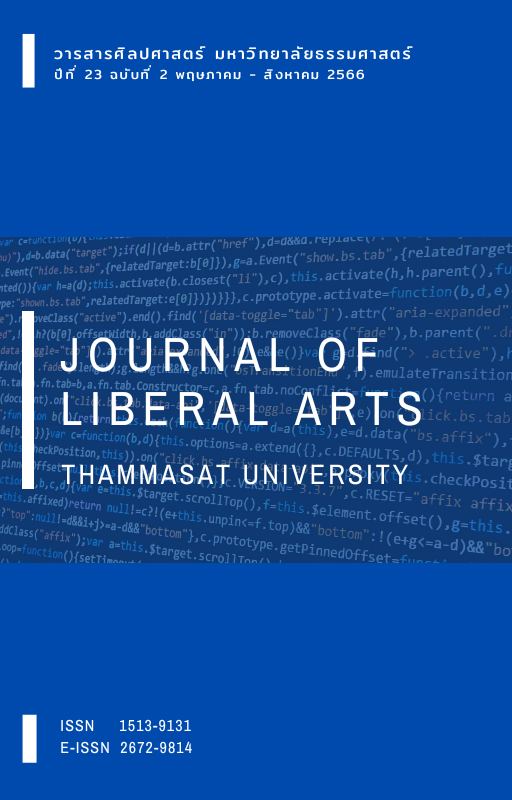The Traditional and Simplified Characters: From the Revolution of the Chinese Characters to the Deviation of the Writing System in Mainland China and Taiwan
Main Article Content
Abstract
This article aims to present a brief history of the Chinese characters revolution which led to the use of simplified characters in mainland China and traditional characters in Taiwan until the present day. An analysis of secondary sources was conducted and it was found that the use of both simplified and traditional characters as mentioned initiated from the same cause. In other words, according to the need of elevating the literacy rate of the Chinese to the more advanced literate countries level, the revolution began from the ideological trend of the Chinese character termination, as well as Chinese romanization. Nevertheless, the resolution of the intellectuals at that period was unable to be realized. Thus, the goal of revolution finally shifted to the simplification of the Chinese characters instead. After the end of the civil war between the Kuomintang-led government and forces of the Chinese Communist party in 1949, the mission for the research to find the romanization system for Chinese by both the Communist party and the Republic of China was conducted in distinctive ways until it ended up with the declaration for the official use of simplified characters with Pinyin in mainland China and the termination of character simplification and bringing back the traditional characters.
Downloads
Article Details

This work is licensed under a Creative Commons Attribution-NonCommercial-NoDerivatives 4.0 International License.
References
กรพนัช ตั้งเขื่อนขันธ์. (2557). อักษรและรัฐ: การปฏิรูปอักษรจีนในปลายราชวงศ์ชิงถึงสาธารณรัฐจีน. วารสารมนุษยศาสตร์, 21(2), 1-25
Li, H. 李浩銘. (2018). 1950年代臺灣的漢字簡化問題.《臺灣學研究》, 22, 77-108.
Li, Y. 李宇明. (2006). 切音字運動普及教育的主張.《漢語研究與应用 (第四輯)》, 4, 1-7.
Lin, W. 林萬菁. (1993). 論漢字簡化的極限與局限. 《中國語文通訊》, 27,17-20.
Lin, Z. 林正三. (2011). 正體字與簡化字在未來的共存之道.《海外華人研究》, 4, 41-66.
Qi, T. 亓婷婷. (2009). 從中共漢字改革歷史看簡化字.《師大學報: 語言與文學類》, 54(2), 107-133.
Wang, X. 汪學文. (1984).《中共文字改革之演變與結局》. 國立政治大學國際關係研究中心.
Zhan, Y. 詹鄞鑫. (2003). 二十世紀文字改革爭鳴綜述.《中國文字研究》, 1-13.
Zhang, T. 章太炎. (1908).《駁中國用萬國新語說》. https://zh.m.wikisource.org/zh-hant/駁中國用萬國新語說
Zhou, P. 周萍. (2016). 《近現代漢字改革方案及其影響因素分析》. 韓國漢字研究所.
Zhou, Z. 周質平. (2013). 晚清改革中的語言烏托邦: 從提倡世界語到廢滅漢字.《二十一 世紀雙月刊》, 136, 28-143.

